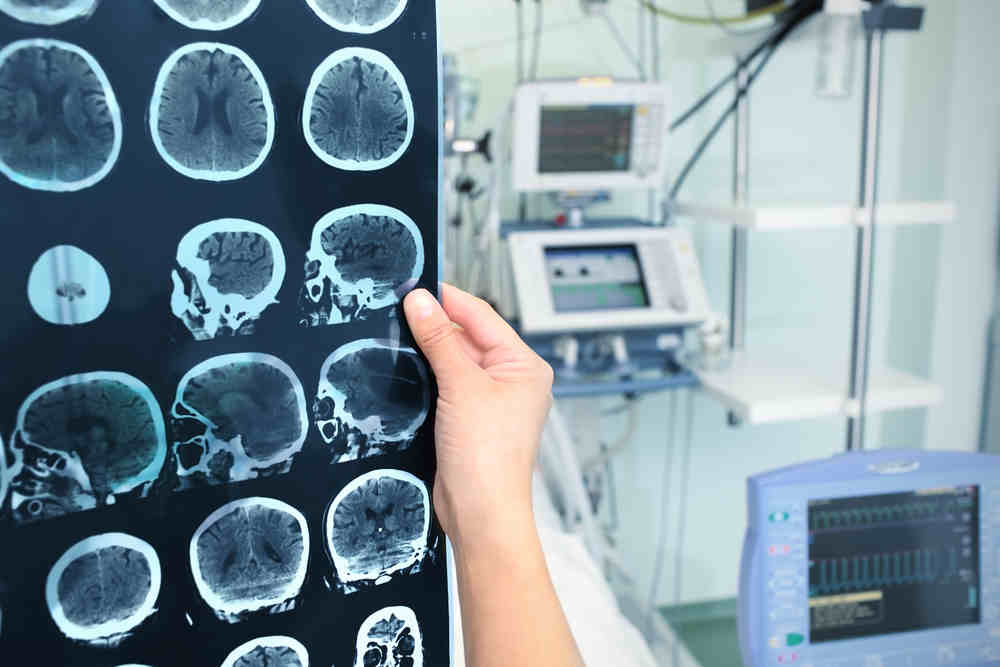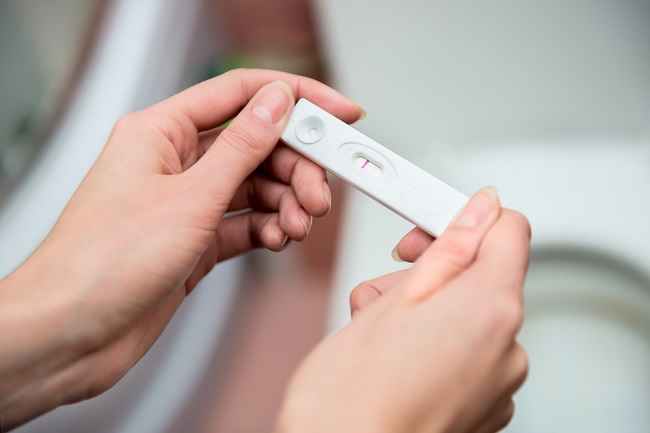Brain tumor surgery with fluorescence is one of the brain tumor surgical techniques using a special dye that can mark the tumor. This technique aims to facilitate the process of tumor removal.
Brain tumor surgery is performed to remove all or part of a tumor that grows in the brain, both benign and malignant tumors. There are various techniques that can be used in this surgical procedure. One of them is with the help of fluorescence.

The fluorescence technique is performed using a microscope, a bluish light, and a special dye. One type of liquid dye that can be used is 5-aminolevulinic acid (5-ALA). This fluid is usually used in the surgical removal of a malignant brain tumor (glioblastoma).
Purpose and Indications for Fluorescence Brain Tumor Surgery
Brain tumor surgery with fluorescence is performed to remove tumors that grow in the brain. Brain tumors are characterized by a variety of symptoms, depending on the type, size, and location of the tumor. Some of the symptoms that can appear are:
- Headaches that are getting worse and worse.
- Spouting vomit.
- Amnesia.
- Changes in nature, for example being irritable.
- Confusion or decreased brain function.
- Difficult to maintain body balance
- It's hard to talk.
- Urinary incontinence.
- Visual disturbances, such as blurred, double, or partial loss of vision.
- Seizures, especially in people without a history of seizures.
If the tumor is small and clearly demarcated so that it can be easily distinguished from the surrounding healthy brain tissue, it will be easier to remove the tumor.
However, in malignant tumors, the tumor boundaries are not clear so it is more difficult to distinguish from the surrounding brain tissue. In cases like this, fluorescence is needed to differentiate between tumor tissue and healthy brain tissue.
This procedure is done by giving the patient a special dye in the form of a solution that must be taken before surgery. This fluid will then be absorbed by the tumor tissue in the brain.
Brain tumor surgery with fluorescence has been shown to help doctors remove more tumor tissue and reduce the risk of complications.
Warning Before Performing Fluorescence Brain Tumor Surgery
Before performing fluorescence brain tumor surgery, tell your doctor if you have any allergies, including allergies to anesthetics. This is to prevent an allergic reaction to the drug.
Tell your doctor if you have or are currently suffering from a blood clotting disorder.
Inform your doctor if you are pregnant or planning a pregnancy.
Tell your doctor if you are taking certain medicines, such as blood thinners, supplements, or herbal remedies. Do not stop using the drug without the doctor's knowledge.
Do not smoke for at least a few weeks before surgery. This is because smoking can slow down the healing process after surgery.
Preparation Before Performing Fluorescence Brain Tumor Surgery
Initial examination will be carried out 1-2 weeks before surgery. This examination also aims to ensure that the patient's condition is healthy enough to perform surgery.
The doctor will give several types of drugs to reduce swelling in the brain and prevent complications.
Patients will be asked to come to the hospital the day before or on the day of surgery. If the patient has not done the initial examination, the examination will be carried out when the patient arrives at the hospital.
When going to the hospital, patients are advised to bring personal items that may be needed while in the hospital, such as nightgowns, underwear, sandals, and other personal equipment..
Prior to surgery, patients need to fast for 8-12 hours. The nurse will ask about the last time the patient consumed food or drink. The patient must also remove all jewelery and is not allowed to wear contact lenses and any kind of make-up, including nail polish.
About 2-4 hours before surgery, the patient will be asked to drink a special dye, such as 5-ALA solution. This fluid will enter the bloodstream and be absorbed by tumor tissue in the brain. The function of the dye is to make the tumor tissue glow reddish when irradiated by blue fluorescence during surgery.
The patient will be asked to lie on the bed and then be taken to the operating room. The patient will be given general anesthesia, so that he is not fully conscious during the operation.
Brain Tumor Surgery Procedures with Fluorescence
After being sedated, the patient will be taken to the operating room and then transferred to the operating table. The surgeon will place the patient's head in an appropriate position to ensure surgery is performed on the right part of the brain. Part or all of the patient's hair will be shaved, so the doctor can perform surgery.
Surgery begins with cutting a portion of the patient's skull. After that, the doctor will perform surgery on the brain to remove the tumor. Some of the equipment commonly used to remove brain tumors are:
- Scalpel or special scissors.
- Special microscope, to see brain tissue more clearly.
- Fluorescence lamp with blue light.
A special dye that the patient has taken before the surgical procedure is absorbed into the tumor, and causes the tumor to glow pink when exposed to blue light. That way, doctors can distinguish the edge of the tumor from the healthy brain tissue around it.
After the tumor is removed, pieces of the patient's skull will be returned to their original position. The doctor will use several metal brackets to make sure the piece stays in place. After that, the patient's scalp will be sutured.
The patient's head will be wrapped with a bandage for approximately 5 days to protect the stitches.
Recovery After Brain Tumor Surgery with Fluorescence
After the operation, the patient will be taken to the recovery room and closely monitored by doctors and medical staff. If the condition is stable enough, the patient will be transferred to the intensive care room or intensive care unit (ICU).
While in the ICU, the patient's condition will continue to be monitored. The duration of patient care in the ICU after brain tumor surgery can vary, depending on the condition of each patient. After his condition improves, the patient will be transferred to an inpatient room for further treatment.
There are several things to know while recovering in hospital after brain tumor surgery, namely:
1. Sensitive to light
The dye used in the fluorescence technique can make the patient sensitive to light for 48 hours after surgery. Therefore, patients should be kept away from too bright light and direct sunlight.
2. Headache
After regaining consciousness, the patient may experience a headache. This complaint can be overcome with pain medication. The patient may also become drowsy due to the effects of the painkillers and residual anesthetic effects. The patient's head and face may also appear swollen.
3. Doctor's examination
Doctors and nurses will check the patient's condition every 15 minutes. One of the tests carried out is to assess the patient's level of consciousness, for example by asking questions to see the patient's response and directing light into the patient's eyes to see the pupillary reflex.
4. Itchy scalp
The scalp may feel itchy after surgery. Try not to scratch too close to the stitches.
5. Administration of drugs
After brain tumor surgery, patients may experience complaints of swelling and increased intracranial pressure. To relieve these complaints, the doctor will give drugs.
One of the drugs that may be given is corticosteroid drugs. This drug can be given in tablet or injection form.
6. Physiotherapy
Physiotherapy aims to speed up recovery. The therapy given can be in the form of breathing exercises and exercises on the limbs, namely the arms and legs. This exercise will be guided by a physiotherapist under the direction of a doctor.
7. Follow-up check
Patients may need to have a follow-up examination in the form of a scan with an MRI or CT scan, 2-3 days after surgery. This examination is done to detect whether there is tumor tissue left or how much swelling of the brain that occurs after surgery.
8. Stitches on the head
Sutures on the patient's head generally can be removed after 5-14 days. However, there are also types of sutures that can be absorbed by the body so there is no need to remove the stitches.
Recovery time after brain tumor surgery can vary from patient to patient. Usually, patients need to be hospitalized for 3-10 days.
Complications and Side Effects of Fluorescence Brain Tumor Surgery
All surgical procedures have risks, including fluorescence-assisted brain tumor surgery. There are several complications that may arise as a result of brain tumor surgery. These complications can arise immediately after surgery or some time after, maybe even a few years later.
Some of these complications are:
- Allergic reaction to anesthetics.
- Suture wound infection.
- Bleeding in the brain.
- Brain swelling.
- Infection of the brain.
- Impaired coordination, balance, or vision.
- Memory loss or amnesia.
- seizures.
- strokes.
- Coma.
In addition to the surgical procedure itself, the special dye used can also cause some side effects, such as low blood pressure (hypotension), increased sensitivity of the eyes and skin to light, and weakness in the body.









